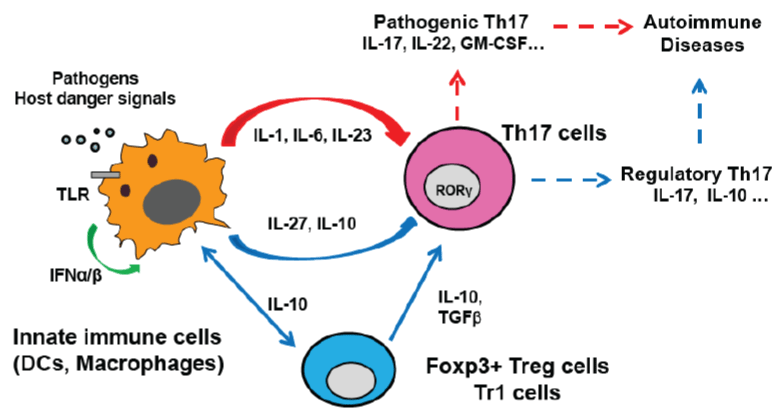
 |
| Figure 1: Modulation of Th17 differentiation by IL-10 from innate cells and regulatory T cells. Upon encountering pathogens or endogenous danger signals, innate immune cells induce the differentiation of naïve T cells into different T helper subsets including Th17 cells. The phenotypes and function of Th17 cells are influenced by inflammatory cytokine milieu and tailored to the nature of a particular immune response. Inflammatory cytokines such as IL-1β and IL-23 may shift Th17 into more pathogenic types with increased production of GM-CSF and IFNγ. The type I IFN may upregulate anti-inflammatory cytokines such as IL-10 and IL-27 as a negative feedback mechanism to damp uncontrolled production of inflammatory cytokines in both innate and adaptive systems, thereby constraining the development of Th17 cells and excessive inflammation in autoimmune conditions. IL-10 produced by both macrophages and regulatory T cells promote the generation of Th17 cells with regulatory phenotypes. |